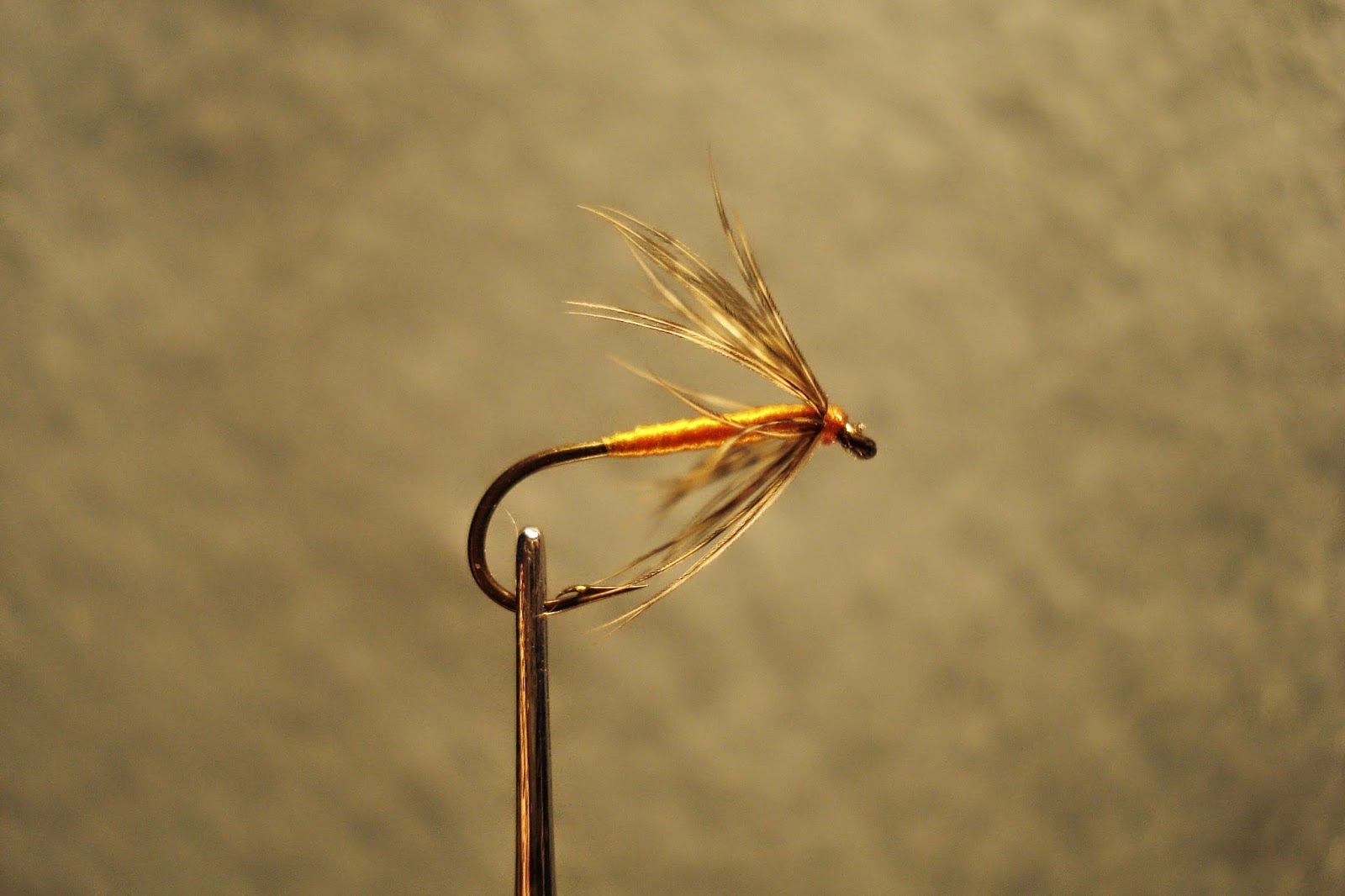 |
| This dressing uses a starling shoulder hackle rather than the starling covert Sylvester Nemes suggests. |
Hook:
|
12-18
|
|
Thread:
|
Black
|
|
Body:
|
Peacock
|
|
Hackle:
|
Starling shoulder
|
|
In his first work on dressing and fishing soft
hackles, The Soft-Hackled Fly
(1975), Sylvester Nemes listed fourteen general soft hackle patterns. The
Starling-and-Herl was the last on the list, and he dressed it with
“body: Peacock herl
hackle: Small covert
hackle from starling wing.”
An earlier precedent for Nemes’s
Starling-and-Herl might be the Black Snipe that T. E. Pritt mentions at the end of his list of flies in North-Country Flies (1886). However, the dressing for a peacock herl-bodied fly dressed with a starling hackle appears verbatim on the short list of flies that
John Younger compiled for fishing the Tweed in his On River
Angling for Salmon and Trout (1840). W. H. Lawrie reprinted the list in Scottish Trout Flies (1966). Younger's starling and herl fly is a
nameless fly, distinguished only by the best months for fishing it, June,
July, and August. Younger dressed it thus:
“Wing: Cock sparrow wing-feather.
Body: Peacock’s herl.”
John Jackson dressed a starling and herl pattern that falls somewhere between a palmer and a hackle, the Brown Clock, No. 10, in his Practical Fly-Fisher (1854). Like the Coch-y-Bonddu or Bracken Clock, the Brown Clock is presumably a beetle imitation. The dressing is simple: "Wings.-Glossy feather of a Starling's neck, wrapped on a body of Peacock's herl and brown silk. Well taken in bright frosty weather." The accompanying plate III depicts the Brown Clock as being heavily hackled on the front half of the hook shank, wound through the peacock herl body, much like Dave Hughes dressed his Hare's Ear Flymph in Wet Flies (1995). |


